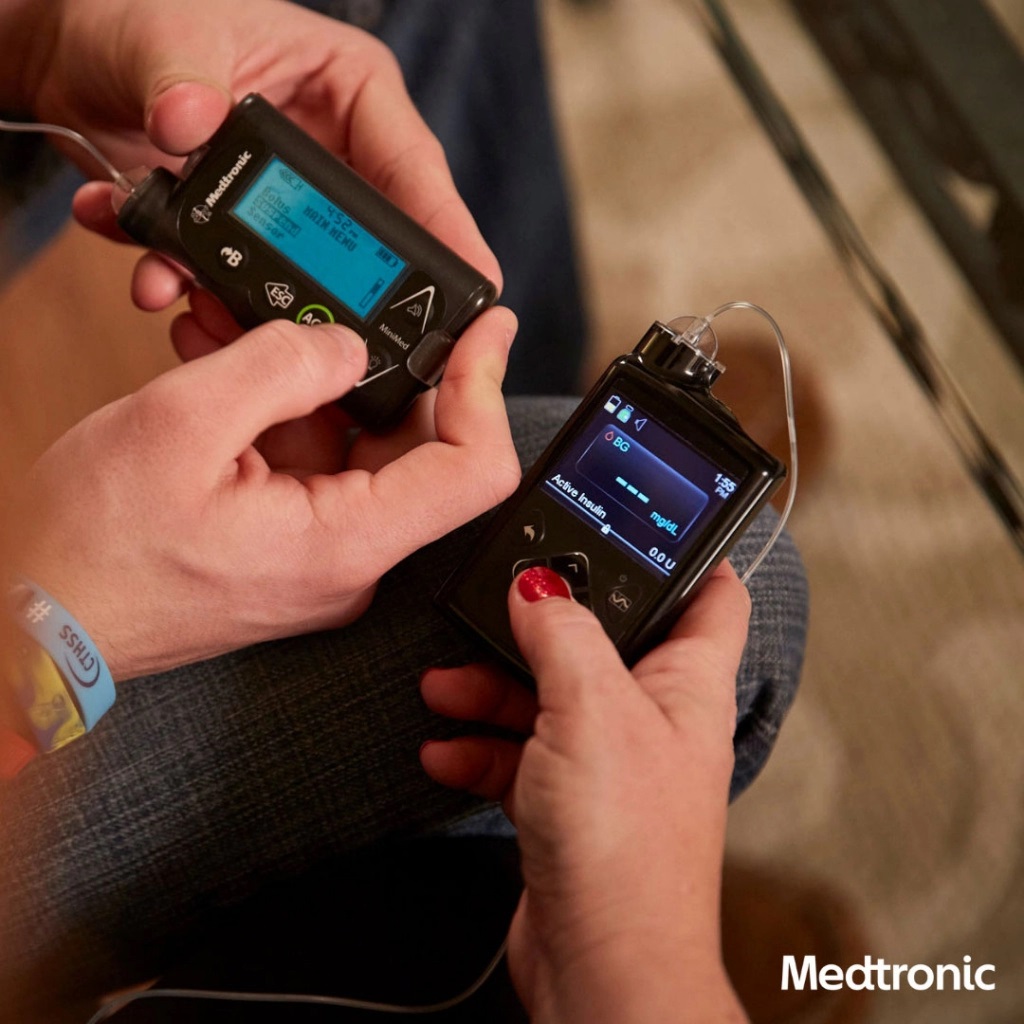Insulin pump
 This service is available under the Compulsory Health Insurance (CHI)
This service is available under the Compulsory Health Insurance (CHI)
Daily glucose monitoring
No glucometer, not even the most advanced one, can give a true picture of blood glucose fluctuations. Due to a lack of data, it is not always possible to determine the exact cause and nature of changes in blood sugar levels and select a suitable and effective therapy tailored to the individual patient.
Thanks to continuous monitoring and analysis of the results of the automatic measurement performed, the doctor can develop the necessary insulin injection program for pump therapy.
The most modern, informative, professional and convenient for patients blood glucose monitoring (CGMS) is performed at JSC "Medicina" (Academician Roytberg Clinic).
Who is it relevant to?
- For diabetic patients who cannot be treated effectively.
- For patients who are on insulin.
- For patients who are on medication, as there is a risk of hypoglycaemia, which the person does not always feel (e.g. at night).
What is a continuous blood glucose monitoring system?
It is a small sensor that the doctor installs to patients in just a few minutes and it is completely painless. Then the device automatically and continuously (every 5 minutes) begins to determine the value of glucose in the fluid of subcutaneous fat tissue.
During all days of the study and while wearing the device, the patient periodically measures blood glucose levels. He/she also keeps a self-monitoring diary in which he/she notes such significant events as:
- taking medication;
- physical activity;
- taking food;
- stress and pain;
- as well as glucometer data.
After the wearing period is over (from 3 to 8 days), the doctor removes the sensor and uses a special program to transfer all the data stored by the sensor to the computer. The specially developed program generates graphics that show all fluctuations in glucose levels - indicating the exact time of exceeding the norm.
The doctor compares the data from the device and the self-monitoring diary. Based on the analysis of glucose fluctuations and the events occurring at that time, the doctor prepares recommendations, gives prescriptions and determines the appropriate therapy for that particular patient.
- Continuous monitoring of blood sugar status.
- Retrospective overnight schedules.
- This device can communicate via Bluetooth with the pump (in patients on insulin therapy) and transmit information about the current sugar level.
- The sensor is compact, does not hinder movement and does not cause any discomfort to the patient.
- You can swim, bathe or even dive to depths of up to 3 metres.
Our doctors

Insulin pump therapy

The insulin pump is aimed at administering insulin in the treatment of diabetes mellitus.
The pump is adjusted directly to each patient.

The process of injecting insulin with a pump is more convenient and inconspicuous for the patient than an injection.
The pump improves the patient's quality of life through ease of use.
- Takes on the role of the pancreas.
- The pump is adjusted directly to each patient.
- This is an alternative to repeated daily injections of insulin with an insulin syringe.
- It allows intensive insulin therapy when used in conjunction with glucose monitoring and carbohydrate counting.
- Relative freedom from a structured diet and exercise regime.
- Insulin pumps allow the patient to deliver a more accurate amount of insulin.
- The process of injecting insulin with a pump is more convenient and inconspicuous for the patient than an injection.
- The pump improves the patient's quality of life through ease of use.
The pump's function is based on interaction with an automated glucose monitoring system and the decision to adjust the dose and speed of insulin administration. Thus glucose levels are maintained at the correct level, ensuring that the patient is stable and that hypo- and hyperglycemia are avoided.
When is insulin pump therapy necessary?
It is recommended to start insulin pump therapy in the following cases:
- poor glycemic control in patients with type 1 diabetes mellitus (DM);
- type 1 DM during pregnancy planning and during pregnancy and the postpartum period, irrespective of glycaemic control indicators;
- type 2 DM on insulin therapy.
You can receive the service as an outpatient or an inpatient. For more information, talk to your doctor or call our round-the-clock call center at +7 (495) 126-51-02.




